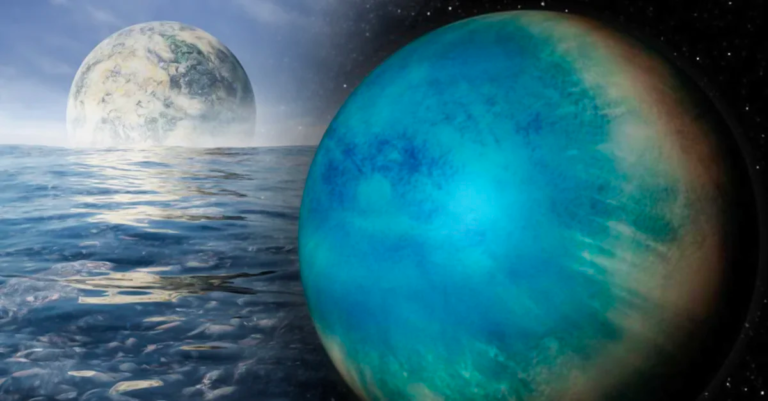Scientists discover an “ocean planet” with an 11-day long year.
A planet entirely covered in water, reminiscent of the movie Waterworld, has been discovered by scientists. The exoplanet, named TOI-1452 b, is situated 100 light-years away and is slightly larger and heavier than Earth.
It orbits a binary system consisting of two small stars in the Draco constellation, and its distance from its star suggests it could support life. The discovery was made by researchers from the Institute for Research on Exoplanets, led by Charles Cadieux, a PhD student at the Université de Montréal.
Using NASA’s TESS space telescope, which surveys the sky for planetary systems similar to our own, the team noticed a periodic drop in brightness every 11 days, indicating the presence of a planet about 70% larger than Earth.
‘I’m extremely proud of this discovery because it shows the high calibre of our researchers and instrumentation,’ said René Doyon, Université de Montréal Professor and Director of iREx and of the Observatoire du Mont-Mégantic (OMM).
With the assistance of the OMM, a specially designed instrument called SPIRou, and a novel data analysis method developed by the research team, astronomers were able to locate the unique exoplanet TOI-1452 b. The host star, TOI-1452, is smaller than our sun and is part of a binary system with two stars of similar size. Although they orbit each other, their proximity causes the TESS telescope to perceive them as a single point of light.
Observations confirmed that TOI-1452 b orbits TOI-1452, and it took over 50 hours to determine the planet’s mass, which is approximately five times that of Earth. While TOI-1452 b is likely rocky like Earth, its size, mass, and density indicate a vastly different world. Unlike Earth, which has a minimal water content, water covers nearly 70% of TOI-1452 b’s surface. In recent years, astronomers have identified and measured several exoplanets between the size of Earth and Neptune, some of which have densities that suggest a significant portion of their mass comprises lighter materials like water. These hypothetical worlds have been dubbed “ocean planets.”
‘TOI-1452 b is one of the best candidates for an ocean planet that we have found to date,’ said Cadieux.
‘Its radius and mass suggest a much lower density than what one would expect for a planet that is basically made up of metal and rock, like Earth.’
Water is thought to make up as much as 30% of the mass of TOI-1452 b, a percentage similar to that of some natural satellites in our Solar System, such as Jupiter’s moons Ganymede and Callisto, and Saturn’s moons Titan and Enceladus. As a result, TOI-1452 b is an excellent candidate for further observation with NASA’s new $10 billion (£7.4 billion) James Webb Space Telescope, which commenced scientific studies in the previous month.
Do not forget to share your opinion with us to provide you with the best posts !




0 Comments